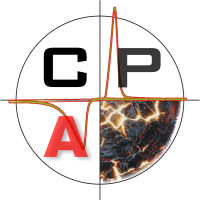
Journal of
Corrosion and Anticorrosion Protection


 Volume I, Issue 1, 2006
Volume I, Issue 1, 2006
 Home
Home------------------------------
 About
Us
About
Us ------------------------------
 Authors Guide
Authors Guide------------------------------
 Subscription
Subscription-----------------------------
 News
News-----------------------------
 Contact
Us
Contact
UsContent



THE ACTUAL STAGE OF THE THERMAL ZINC PLATING TECHNOLOGIES
Caius BULEA  , Horaţiu
VERMESAN, E. GRUNWALD, George VERMESAN
, Horaţiu
VERMESAN, E. GRUNWALD, George VERMESAN
1 S.C. BETAK S.A. Bistrița
2 Technical University of Cluj-Napoca, Romania
Abstract: The knowledge and modernisation of the galvanisation technologies, along with the cost reduction and the improvement of the galvanised products quality is an important factor, which can influence the activities in a galvanising workshop. Starting from these observations, in this work, a study of the main thermic galvanisation technologies is made, as result from the scientific literature and from the authors' practice and experience. Among the studied thermic galvanisation technologies, we mention the following: the TECHNIGALVA procedure, the continuous galvanisation, the zinc deposit through spraying, the thermic galvanisation + the phosphating; the thermic galvanisation followed by painting (the DUPLEX procedure), the thermic galvanisation + the difusion annealing, the wet and dry galvanising procedures; the SENDZMIR procedure (clean technology). In the last part of the work, the main conclusions are presented.



THE STRUCTURE AND THE PROPERTIES OF THE COATINGS OBTAINED THROUGH THERMAL ZINC PLATING
Ernest GRUNWALD1, Horațiu VERMESAN2  , Caius
BULEA1, George VERMESAN2
, Caius
BULEA1, George VERMESAN2
1 S.C. BETAK S.A. Bistrița
2 Technical University of Cluj-Napoca, Romania
Abstract: After a short introduction, in which the importance of hot dip coatings deposit is shown, as well as the enumeration of these coatings with a short characterisation, the paper presents the thermal galvanisation, insisting on its main advantages. Then, it analyses the structure of the galvanised coating, starting from Fe-Zn system, the mechanism and the kinetics of the coating formation, as well as the analysis of the main influent factors. In the last part of the paper, the main properties of the galvanised coating are presented.



THE CORROSION BEHAVIOR OF THE THERMALLY GALVANIZED COATINGS
Horațiu VERMESAN  , Elena
VERMESAN, Caius BULEA, Ernest
GRUNWALD
, Elena
VERMESAN, Caius BULEA, Ernest
GRUNWALD
1 Technical University of Cluj-Napoca, Romania
2 S.C. BETAK S.A. Bistrița, Romania
Abstract: The work presents an analytical study regarding the corrosion behaviour of the thermally deposited coatings, also noticing the mechanisms through which each constitutive phase (eta, zeta, delta, gamma. alfa) of the zinc coating, according to its position in the layer and its electrochemical potential, behaves in different corrosive environments. It is also analysed the influence of the technological galvanisation parameters of the bath composition, of the atmosphere types, as well as the influence of the sulphur dioxide upon the corrosion resistance of the zinc thermic deposits.



THE IMPACT OF THE GALVANIZATION PROCEDURE ON THE ENVIRONMENT AND ON HUMAN HEALTH
Elena VERMESAN1, Caius BULEA2  , Horatiu
VERMESAN1
, Horatiu
VERMESAN1
1 Technical University of Cluj-Napoca, Romania
2 S.C. BETAK S.A. Bistrița, Romania
Abstract: The work presents a detailed study regarding the nature of the pollution substances, present in all the stages of the galvanisation process: degreasing, pickling, fluxing, the galvanisation itself in zinc hot dip, residuum and zinc ash formation. Their individual and global impact on the environment and on human health is analysed. Also, some solutions for the diminishing of their negative effects are presented, as well as legislative settlements regarding this aspect.
 Year
Year
|2011||2010|
|2009|
|2008|
|2007|
|2006|
The Journal of Corrosion and Anticorrosion Protection is edited by S.C. BETAK S.A.
in collaboration with Technical University of Cluj-Napoca, Romania